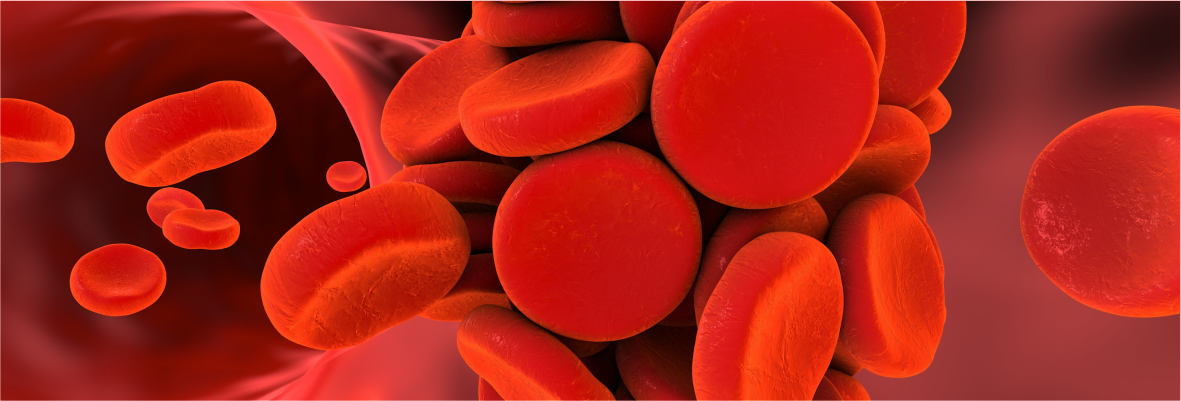D-Dimer
D-Dimer is a protein that is produced after blood clotting and subsequent breakdown of blood clots. Whenever there is damage to any body part or bleeding, intrinsic or extrinsic coagulation pathways are activated, resulting in the formation of a blood clot at the site.
During the coagulation process, fibrinogen is produced by the liver, which contains three different polypeptides; a.b & g linked by Disulfide bonds. Next, thrombin cleaves polypeptide a & b of fibrinogen and leads to the formation of soluble fibrin monomers, which then associate and form fibrin polymers. Finally, the D domains of these fibrin polymers are cross-linked by activated factor XIII, producing an insoluble cross-linked fibrin clot.
To maintain a proper balance between coagulation and fibrinolysis, plasmin, the end product of the fibrinolytic system, cleaves insoluble fibrin polymers, resulting in the production of a fibrin degradation product, and thus D-Dimer is produced.
Since D-Dimer is the degradation product of cross-linked fibrin; therefore, it reflects ongoing activation of the hemostatic and thrombolytic system.
D-Dimer has a half-life of 8 hours and is a valuable biomarker routinely used to rule out venous thromboembolism (VTE). D-Dimer is used to diagnose pulmonary embolism (PE), deep vein thrombosis (DVT), and disseminated intravascular coagulation (DIC) and is widely used to assess the risk of VTE recurrence.
Healthy individuals have minimum levels of D-Dimer in their blood. D-Dimer level increases naturally with age & high levels of D-Dimer are also present in blood in case of significant clot like with deep vein thrombosis (DVT), usually in legs, and can lead to severe problems; stroke, cardia arrest, etc.
High plasma D-Dimer levels of >15,000 ng/mL are observed in VTE, cancer, and pneumonia leading to high mortality.
D-Dimer is very often found elevated in patients with COVID-19. In addition, D-Dimer levels correlate with disease severity and are a reliable prognostic marker for mortality in COVID-19 patients.
There are various techniques available for Quantitative determination of D-Dimer inpatient citrate plasma; Turbidimetry, ELISA /CLIA, and FIA (Fluorescence immunoassay ) analyzer.
J Mitra & Co. offers ELISA & Rapid (based on Fluorescence immunoassay) tests to diagnose D-Dimer in Human Plasma. Both the products are highly specific and have user-friendly test procedures, excellent accuracy with an Accuracy coefficient (R2) of >0.99, and good Precision in test results.

